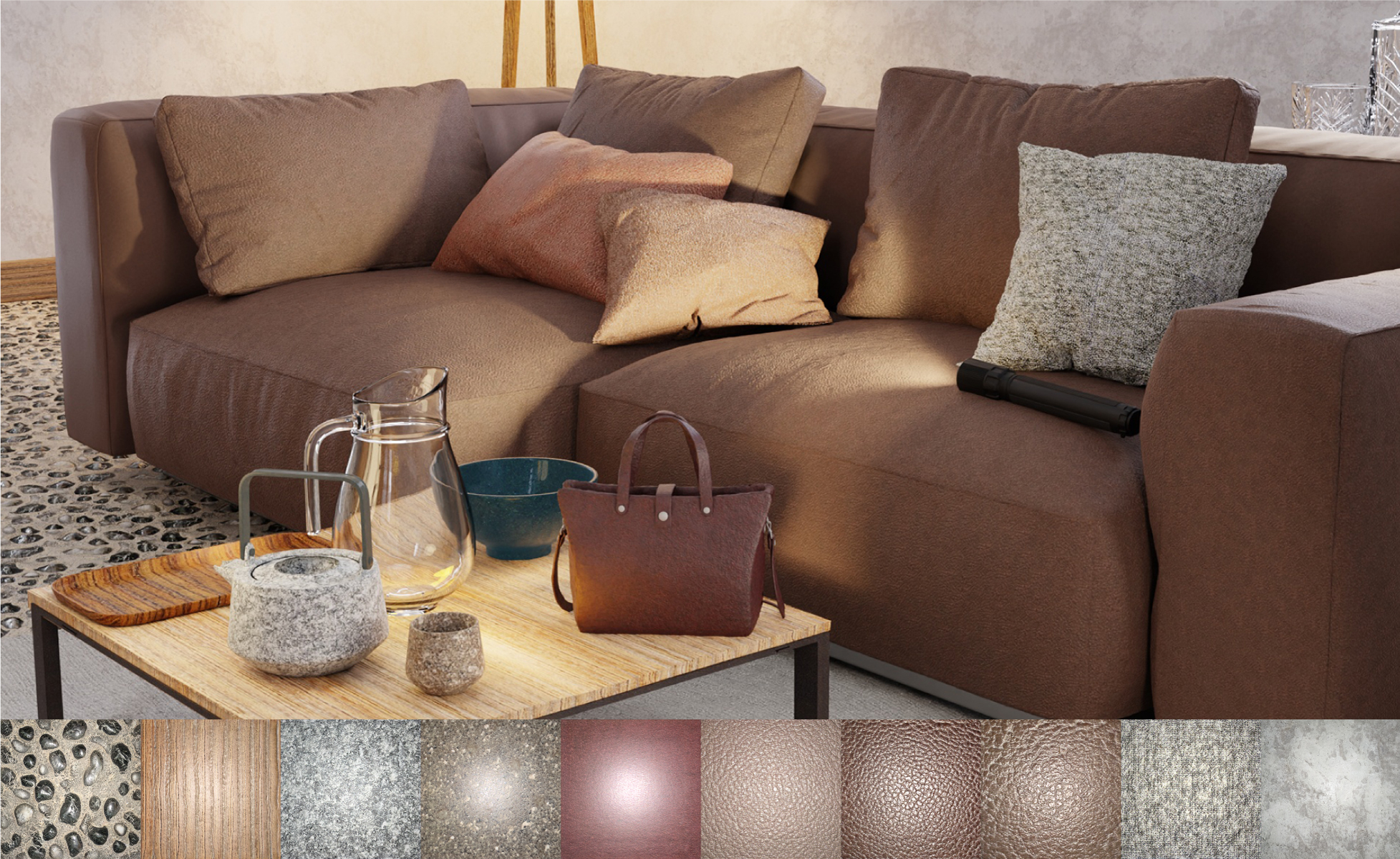This is code of "PhotoMat: A Material Generator Learned from Single Flash Photos" Project | Paper
The StyleGAN part of the project is based on stylegan2-ada.
To set up environments, please run below (tesed in Linux):
conda env create -f env.yml
Please download pretrained model of from this link.
Inside the model folder, G_# is the generator, MatUnet_# is the maps estimator of #, which include the pretrained network of 256x256, 512x512, 1kx1k and carpaint
For sampling 256x256, 512x512, 1kx1k materials, please run this:
python material_sampler.py --network=$G_path --outdir=$out_path --matunet=$MatUnet_path --reload_modules=True --gpus=1 --out_nc=8 --seeds=10-50
Where $G_path is generator path, $out_path is output path, $MatUnet_path is the path of map estimator.
for car paint sampling, please run this:
python material_sampler.py --network=$G_path --outdir=$out_path --matunet=$MatUnet_path --reload_modules=True --gpus=1 --out_nc=11 --seeds=10-50 --carpaint=True
In the output folder, for each sample, we save relit materials of neural generation and analytic renderings under five different lightings, and the generated material maps.
We release three datasets:
(1). A 2.5k 512x512 glossy dataset link, where the highlight is roughly centered for each example
(2). A small 512x512 car paint dataset link
(3). 12k 2kx2k "in-the-wild" dataset link, where the json file contains the estimated position of each example
To train the 256x256 generator on dataset (1) or (2), please run this:
python train.py --outdir=$out_path --data=$data_path --gpus=8 --aug=noaug --batch 64 --deco_mlp 2 --d_res 256 --use_ray --no_cond_map --cdir_d=1 --load_real
To train the 512x512 or 1kx1k generator on dataset (3), please run this:
python train.py --outdir=$out_path --data=$data_path --gpus=8 --aug=noaug --batch 64 --deco_mlp 2 --d_res $res --use_ray --no_cond_map --cdir_d=1 --load_real --load_real_label
Where $data_path is training set path, $out_path is output path, $res control the resolution: 256 | 512 | 1024, --circular make output tileable (but only works well for 256x256 model so far); --batch control total batch size.
We first run below script with --force_shift=False then finetune maps esimator with --force_shift=True
python material_trainer.py --network=$G_path --outdir=$out_path --reload_modules=True --gpus=1 --batch=4 --out_nc=8 --w_td=1 --w_dl1=0.1 --lr=1e-4 --light_type=pt --size=4 --li_range=0.5 --force_shift=True --car_paint=False
Where $li_range control the sampled light range (default: 0.5), --force_shift shift materials during training every iterations, --car_paint is for carpaint model only.
If you find this work useful for your research, please cite:
@article{zhou2023photomat,
title={PhotoMat: A Material Generator Learned from Single Flash Photos},
author={Zhou, Xilong and Ha{\v{s}}an, Milo{\v{s}} and Deschaintre, Valentin and Guerrero, Paul and Hold-Geoffroy, Yannick and Sunkavalli, Kalyan and Khademi Kalantari, Nima},
journal={arXiv e-prints},
pages={arXiv--2305},
year={2023}
}
Please contact Xilong Zhou (1992zhouxilong@gmail.com) if there are any issues/comments/questions.
